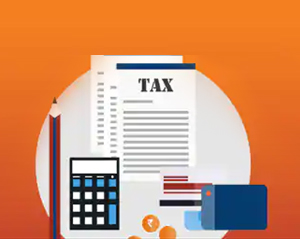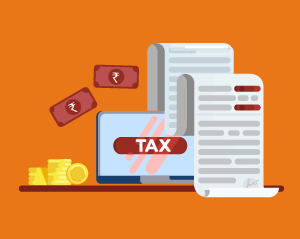The Government of India taxes you on your earned income. This is collected via multiple methods. A percentage of tax is deducted from your earnings such as salary, dividend income, interest income, sale or property and other sources. This is usually done under existing rules that apply for Tax Deduction at Source (TDS) or Tax Collected at Source (TCS). Usually this is before you compute your entire tax liability for the financial year.
At the end of the financial year, you can compute your total earnings and use the various exemptions and deductions that allow you to lower your taxable income under existing rules. If more tax has been collected than the actual amount due, you can claim the same by filing your income tax return.
An income tax refund is available for both individual taxpayers and businesses. Let’s find out more about how to get an income tax refund.
Is filing an income tax return mandatory for claiming a refund?
Yes, filing an income tax return is mandatory if you want to claim a tax refund. Once you file the return, the income tax department reviews it to verify and calculate your actual tax liability. This is then compared with the tax you have already paid. If an excess amount is paid, a refund of this is issued to you.
Do keep in mind, in India, filing an income tax return is not just a step to claim a refund. It is also a legal requirement.
Steps to Claim an Income Tax Refund
Here’s a step-by-step guide to claiming your income tax refund:
File your income tax return
You can start by filling out the income tax return form. Your return should include complete financial information, such as all your income sources, investments and savings, eligible exemptions and deductions and other relevant details for the financial year in question. You must also file your income tax return by the designated due date
Enter correct bank details
Double-check that your bank account details, such as your account number, Indian Financial System Code (IFSC) code and other similar information, are accurate in your income tax return so the refund can be directly credited to your bank account
Submit your income tax return
Once your income tax return form is fully filled, submit it online
Verify your income tax return
After submission, you need to verify your return. You can e-verify it instantly via a One-Time Password (OTP) sent to your registered mobile number or using other electronic methods. Alternatively, you can physically verify by mailing a signed copy of ITR-V to the Centralised Processing Centre (CPC) within 120 days of filing the tax return
Processing and review
An assessment officer will review your income tax return to ensure it is accurate and complies with tax laws. You qualify for a refund if the tax paid exceeds your actual tax liability
Receive your refund
If you are eligible, the tax authorities will initiate the refund process and credit the refund amount to the bank account provided in your income tax return
How to Check the Status of Your ITR Online
Below is a quick guide on how you can check your income tax refund status online:
Go to the e-Filing portal
Open the homepage of the official Income Tax e-filing portal
Click on ‘Income Tax Return (ITR) status’
Look for the option labelled "Income Tax Return (ITR) Status" and click on it
Enter your details
On the ITR Status page, input your acknowledgement number and a valid mobile number, then click on "Continue"
Verify with OTP
You will receive a 6-digit OTP on the mobile number provided. Enter this OTP and click "Submit"
How to Track the Status of Your Income Tax Refund
You can follow the steps below to track your income tax refund status online:
Log in
Go to the Income Tax e-Filing portal and log in with your user ID which is usually your PAN) and password
Navigate to ‘View Filed Returns’
After logging in, go to the e-File tab, then select Income Tax Returns > View Filed Returns
Check refund status
You will see a list of filed returns by assessment year. Select the desired assessment year to check the status of your refund
You may encounter the following statuses:
Refund issued
This implies that your refund has been processed and issued
Refund partially adjusted
In this case, a part of your refund has been adjusted against any outstanding tax dues
Full refund adjusted
This indicates that your entire refund has been adjusted to clear existing tax dues
Refund failed
This implies that the refund could not be processed. This usually happens due to incorrect bank details
Interest on Income Tax Refund
Taxpayers are eligible to receive interest on their income tax refund at a rate of 0.5% per month until the refund is issued. This interest is granted under Section 244A of The Income Tax Act, 1961. Here’s how it works based on when you file your return:
- If the return is filed on or before the due date: Interest starts accruing from April 1 of the assessment year and continues until the refund is issued
- If the return is filed after the due date Interest accrues from the actual date of filing until the refund is granted
People like you also read...







